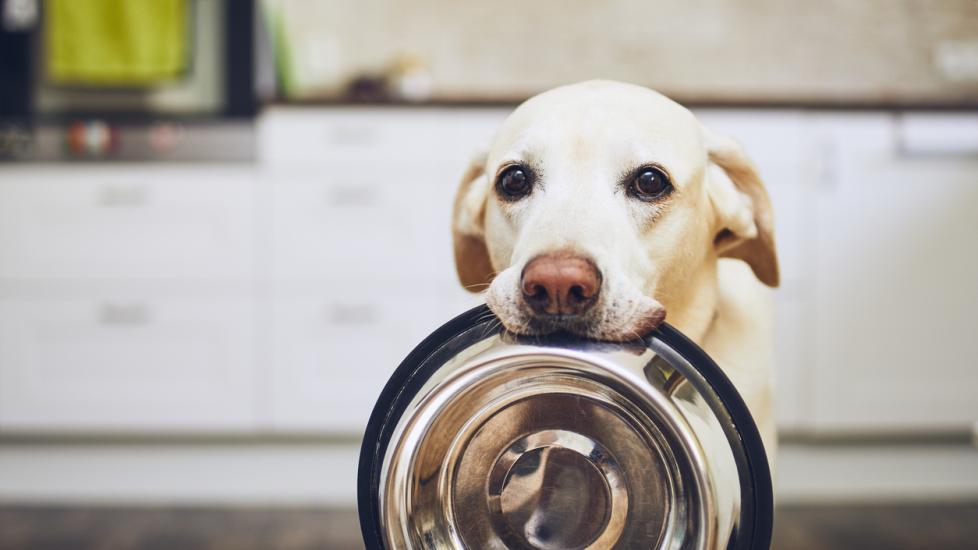Can Dogs Eat Asparagus?
NOTE: Always check with your veterinarian first before giving your dog any new foods, especially “people foods.” What might be okay for one dog might not be good for your dog, depending on multiple factors, such as their age, health history, health conditions, and diet. Dogs on prescription diets should not be fed any food or treats outside the diet.
Asparagus is a favorite side at a summer barbecue and a hearty addition to pasta dishes. But can we share a stalk with our four-legged friends?
If you’ve ever wondered, “can dogs eat asparagus?” the good news is this veggie isn’t toxic to pups. That said, there are a few things to keep in mind about safely feeding asparagus to your dog.
Is Asparagus Good for Dogs?
Asparagus is safe and non-toxic for dogs to eat. It contains many health benefits—asparagus is high in fiber and packed with antioxidants, and it’s low in fat and sugar. Plus, it contains nutrients like:
-
B-complex vitamins
-
Vitamin A
-
Vitamin C
-
Vitamin K
-
Potassium
-
Zinc
-
Iron
-
Folic acid
-
Thiamin
But along with its benefits, asparagus can have some not-so-great side effects. Nothing dangerous, just … smelly. The vegetable can give your pup some flatulence and strange-smelling pee, just like it does for humans.
Can Dogs Eat Raw Asparagus?
Yes, dogs can eat raw asparagus. However, uncooked asparagus has a hard, tough texture, making it difficult for dogs to chew and digest. Raw asparagus can easily become a choking hazard for dogs or cause an intestinal blockage. Your dog might also experience vomiting, gas, or diarrhea when digesting asparagus.
Can Dogs Eat Cooked Asparagus?
Cooked asparagus is actually much safer for dogs to munch on—as long as it’s prepared correctly—because it’s easier to chew, swallow, and digest.
When you cook asparagus for your dog, cook it completely plain. Don’t add any butter, salt, onion, garlic, or any other ingredients that can be harmful to your dog.
How to Safely Feed Your Dog Asparagus
Whether you feed asparagus to your dog cooked or raw, always make sure it’s completely plain and cut into small, bite-sized pieces. Here are a few ways to prepare and safely serve asparagus to your dog.
-
Steam plain asparagus, let it cool, and chop it into small, edible pieces to use as treats or as a food topper.
-
Boil plain asparagus. Make sure it’s chopped into small, edible pieces and cooled before serving. You can also use boiled asparagus as treats or as a food topper.
-
Blend asparagus into a smoothie with some dog-safe fruits like bananas, apples, and blueberries. Then add some plain, sugar-free, and xylitol-free yogurt.
-
Blanch cut-up pieces of asparagus, then dry them out in a dehydrator. This is better than store-bought dehydrated asparagus, which can contain extra preservatives and large amounts of salt.
-
Cook a dog-safe soup with asparagus, sodium-free chicken broth, and other dog-safe ingredients like chopped carrots, celery, and boiled, boneless, skinless chicken.
How Much Asparagus Can Your Dog Eat?
Treats and snacks of any kind should be given in moderation and only make up 10% of your dog’s diet. The other 90% should come from a well-balanced dog food diet.
Eating too much asparagus can upset your dog’s stomach, causing gas, vomiting, and diarrhea. To keep your dog comfortable, stick to these recommended portions:
-
Extra-small dog (2-20 pounds) = 1 teaspoon of asparagus
-
Examples: Yorkies, Chihuahuas, Pomeranians, Pugs
-
-
Small dog (21-30 pounds) = 2 teaspoons of asparagus
-
Medium dog (31-50 pounds) = 2-3 teaspoons of asparagus
-
Examples: Basset Hounds, Border Collies, Australian Cattle Dogs
-
-
Large dog (51-90 pounds) = 1-2 tablespoons of asparagus
-
Examples: Pit Bulls, German Shepherds, Labrador Retrievers, Australian Shepherds
-
-
Extra-large dog (91+ pounds) = 2-3 tablespoons of asparagus
-
Examples: Newfoundlands, Bernese Mountain Dogs, St. Bernards, Great Pyrenees
-
Featured Image: iStock/Chalabala
